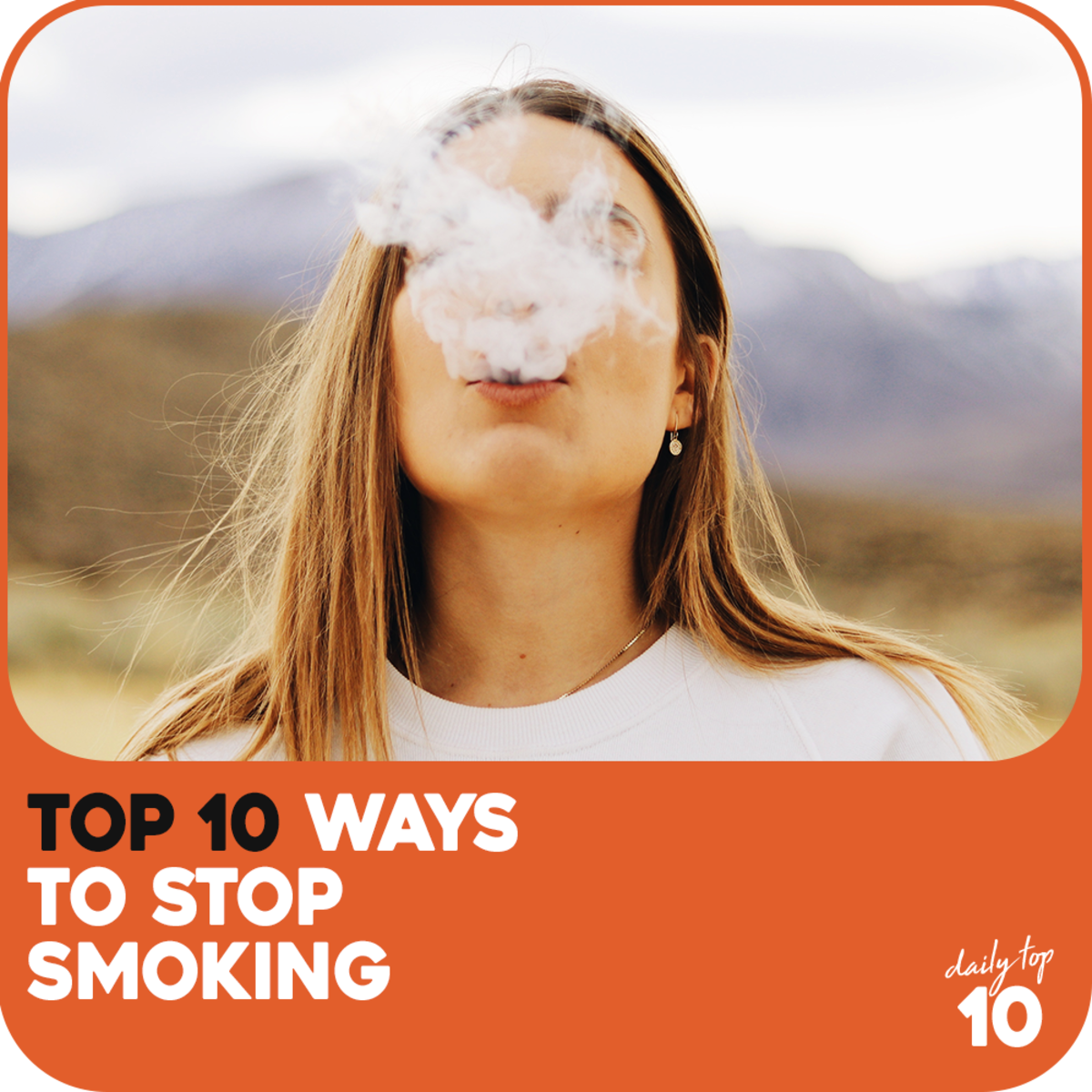Up in Smoke!-- The Hidden Health Effects of Smoking

Originating as a primarily ritualistic practice, smoking has transformed down through the centuries into what is now a socially accepted habit. Beginning with ancient peace pipes once used by the Native Americans, thick heavy cigars preferred by overweight businessmen, and long, slim cigarette holders dangling delicately from the fingers of dainty nineteen thirties movie stars, smoking has often been glamourized. Frequently pictured as “cool” and exciting, smoking is a global habit that is thousands of years in the making. From the smoke filled boardrooms, business meetings and smoking sections of restaurants and bars, the haze has filled both the air and the minds of many. Like countless other products on the market today, the advertisements coursing through the media have often touted cigarettes as being beneficial. Only recently in the light of new research on the subject have we begun to understand the true effects of smoking on the health. Doctors and Scientists both along with the Surgeon General, have all issued startling warnings of the serious health risks of smoking. Despite the well-known dangers of smoking, people worldwide light up some 15 billion cigarettes daily (“Unhealthy” 24). That is a truly astounding number. So while not the only possible cause of these dangerous illnesses, it is because of smoking cigarettes that many people today fall prey to heart disease, lung cancer and other respiratory problems as well as premature aging.
Due largely to the constant barrage of nicotine, tar and other toxic chemicals introduced into the blood stream by cigarettes and cigars, heart disease is now the number one cause of death in smokers. Simply puffing one cigarette produces unusual changes in the body namely, increases in blood pressure and pulse rates, as well as drops in the normal body temperature of hands and feet. Carbon monoxide in tobacco smoke is absorbed in the bloodstream displacing the oxygen that is essential for life. This triggers a reduction in the amount of oxygen that reaches the heart causing it to work harder than normal. Smoking causes ischemic heart disease and arteriosclerosis (Bailey 136). Platelet counts and fibrinogen levels are more elevated in smokers compared to non-smokers and the smoke from tobacco raises the possibility of platelets sticking together. This in turn multiplies the chances that a blood clot, which will block the flow of blood to the heart, will form in one of the major coronary arteries. When a blockage does develop suddenly in an artery, it can lead to a stroke or even a fatal heart attack. The book The Invisible Drug stated “For years it was thought that a smokers (sic) risk of dying from heart disease was about three times higher than a nonsmoker. However, that view has changed since new evidence was reported in the British Medical Journal in 1995 that says the risk is much higher” (135). Smoking lowers HDL or “good” cholesterol. It can damage the linings of the artery walls and even create a build-up of calcium that adheres to the inside of the artery. This is especially dangerous since these calcium deposits restrict the flow of blood and can split off resulting in brain and heart damage. Because of this, smokers have five times the rate of nonfatal heart attacks as nonsmokers (Bailey 135). Additionally, the risk of a smoker developing coronary artery disease or myocardial infarction is 1.7 to that of never smokers, and smokers have 33% more angina per day than nonsmokers (Lovell 148). Yet as important as taking care of our heart is, thousands of people die from heart disease each year because they were addicted to cigarettes. Sadly, many of these heart disease related deaths could have been prevented if they had just removed one of the major contributing causes, that of smoking. These staggering facts and statistics help put into perspective just how damaging to the heart smoking really is.
Following closely on the heels of heart disease is lung cancer as another leading cause of death in smokers. Smoking causes irreversible damage to the lungs. It also leads to asthma, emphysema, and chronic bronchitis. The harm to the lungs caused by tobacco smoke is so notable that some of the executives working for tobacco companies have even admitted it. This quote from Addison Yeaman the vice president and general counsel for the Brown and Williamson Tobacco Company illustrates this well. “[…] some combination of constituents of smoke will be found conducive to the onset of cancer or to create an environment in which cancer is more likely to occur” (Lovell 61). Using nicotine increases the risk of getting many types of cancers and heart disease as well many other medical problems. Scientists have discovered that nicotine from cigarettes spreads through the whole body and is even in the breast milk of nursing mothers who smoke (“Effects” 1). Certainly, this is detrimental to the health of both the mother and her child. Second hand smoke has numerous adverse health effects for those that do not smoke, so how much more so damaging to the lungs is actually smoking. No safe number of cigarettes can be smoked without increasing the risk of lung cancer, even just one cigarette a day will increase that risk (Bailey 132). Smoke inhalation causes inflammation and irritation in the respiratory tract that can often be fatal. This is why people trapped in burning buildings require immediate medical treatment and the use of oxygen to restore normal lung function. The principle is much the same when it comes to voluntarily breathing smoke into your lungs. Smokers commonly suffer wheezing, bronchitis and pneumonia. Smoking just one pack a day for a year is equivalent to pouring a cup of tar over the respiratory tract (Smoking 45). The world-renowned Health Physicist, James Repace is quoted as saying, “The National Toxicology Program now includes mustard gas, asbestos, and arsenic in the same category as tobacco smoke. You don’t want to go near any of those” (Lovell 54). Mustard gas, asbestos, and arsenic are all substances that are deadly, either immediately or over the long term through cancer causing agents, and now tobacco smoke has taken its rightful place among them. Even persons who once promoted the use of cigarettes have not escaped their death dealing effects. Wayne McLaren dead at age 53 was one of two former “Marlboro Men” who died of lung cancer (Lovell 45). The evidence is clear smoking causes all sorts of breathing problems ranging from the often-fatal lung cancer to pneumonia and chronic bronchitis.
Not to be over looked is the effect of smoking on the physical appearance of the body. Our society is obsessed with being attractive and yet many are addicted to a substance that destroys the very things they strive to achieve, both youth and beauty. Duped into thinking smoking helps to control weigh gain and manage stress millions have become victims of false advertisement. They have unwittingly overlooked the more important facts about tobacco smoke. Based on the idea that a cigarette in hand will add to their allure many have unknowingly signed their own death warrant. Experience has taught us that longevity is adversely affected by smoking (Lovell 58). The article “Watching the World” quoted a UC Berkeley Wellness Letter as stating, “How much does smoking shorten a person’s life? By five to ten years on average” (30). Cigarettes are full of dangerous chemicals; arsenic, acetone, formaldehyde, carbon monoxide, and hydrogen cyanide just to name a few. A steady diet of any one of those chemicals is enough to kill a person, let alone breathing all of them in at once on a daily basis. It is understandable then how someone who started smoking as a teenager could have a reduced life expectancy and at least a 50% chance of dying prematurely (Bailey 134). Premature aging comes in many forms as smoking takes its toll on the body, those who smoke are at a greater risk factor for bone fractures and osteoporosis. Smoker’s voice that hoarse sound brought on by frequent hacking coughs is another unattractive result of smoking cigarettes. Along with the often-debilitating bone and breathing problems that can result from smoking the elasticity in the skin feels the adverse effects as well. The use of cigarettes usually leads to fine lines and wrinkles appearing at an early age. The book The Invisible Drug makes an excellent point, “Smoking also causes a cosmetic ugliness that can be especially dreadful for women, “smokers face” (sic). Constant puckering of the mouth […] causes deep creases in the skin radiating around the lips. After years of smoking, these unnatural creases become permanently visible “smoker’s wrinkles” (160). Just as smoking reduces the amount of oxygen that can reach the heart, it causes circulation in the skin to suffer inhibiting the proper production of collagen, thus leading to a dry and wrinkled face. Smokers often look decades older than they really are. Therefore, in the end the quest for youthful allure and beauty is ill fated when made through cigarettes.
Despite other possible reasons, it is because they are smokers that many people today are plagued with heart disease, lung cancer and other respiratory illnesses as well as premature aging. While sadly most of these are life threatening, by simply eliminating the root cause, that of smoking, many of these serious health problems can be prevented.
Works Cited
Bailey, William Everett, The Invisible Drug. Houston, TX: Mosaic, 1996, Print.
“Effects of smoking, alcohol, and medicines on breastfeeding.” CareNotes. Feb.1,
2011: Gale Cengage Health & Wellness. Web. 22 Feb. 2011.
Lovell, Georgina. You Are The Target: Big Tobacco: Lies, Scams- Now The Truth.
Vancouver, B.C., Canada: Chryan. 2002. Print.
Smoking: Current Controversies. Ed. Auriana Ojeda. San Diego, CA:Greenhaven.
2002. Print.
“Unhealthy Life-Styles—How High the Cost?” Awake! July 22, 1997: 24-27. Print.
“Watching the World” Awake! Nov. 2009: 30. Print.
Up in Smoke!-- The Hidden Health Effects of Smoking by Daelyn H. Appleton is licensed under a Creative Commons Attribution-NonCommercial-NoDerivs 3.0 Unported License.








